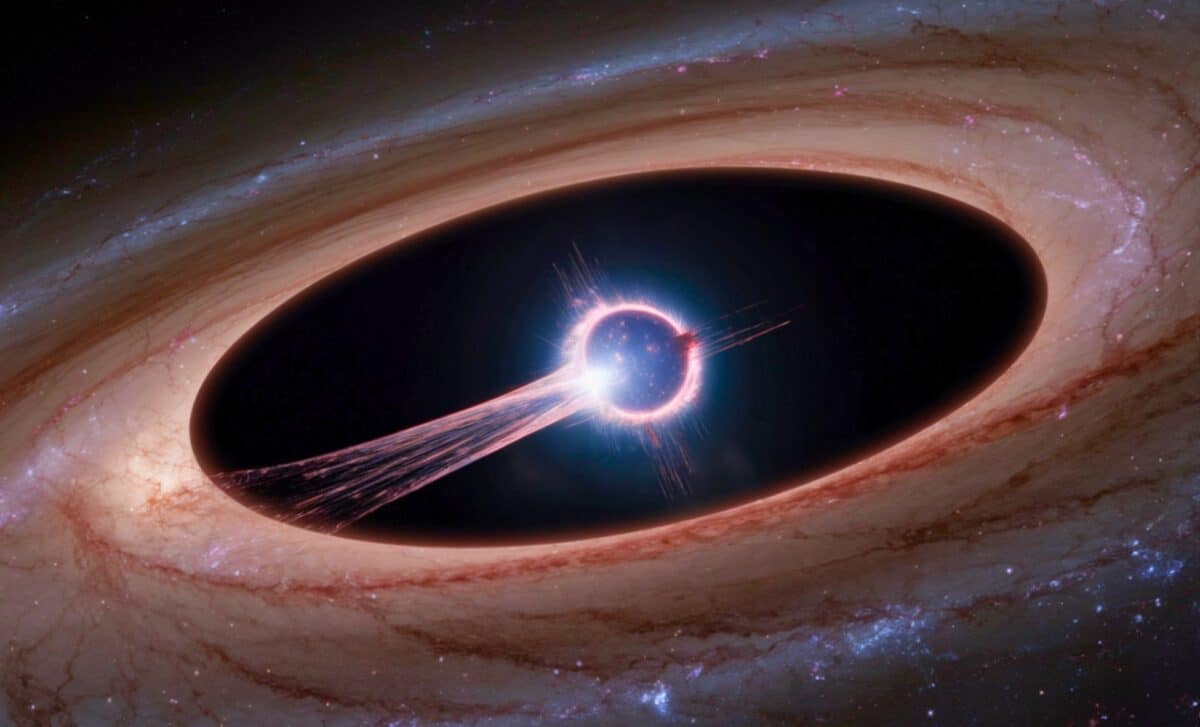
Arezki Amiri Published on December 12, 2024
Collected at: https://dailygalaxy.com/2024/12/scientists-capture-a-star-being-torn-apart-at-full-speed-by-a-black-hole/
A massive Wolf-Rayet star in the Cygnus X-3 system is speeding toward its destruction, torn apart by the powerful gravitational forces of what may be a black hole. This system, located 32,000 light-years away, has fascinated scientists, as new data from the XRISM telescope reveals stunning details about the interaction between the two cosmic bodies. The question remains: What exactly is lurking in the heart of this system?
What Makes Cygnus X-3 So Terrifying?
The Cygnus X-3 system is located in the Cygnus constellation and consists of a massive Wolf-Rayet star and a compact object that is suspected to be a black hole. The two objects are so close to one another that they complete their orbit in just under five hours.
This intense proximity generates extreme energy phenomena, with the Wolf-Rayet star expelling stellar winds at speeds of 1.5 million km/h — more than a thousand times the speed of sound. This creates turbulent zones around the suspected black hole.
The star’s gas is heated and ionized, emitting X-rays that can be detected even through the dense dust clouds of the Milky Way, thanks to the powerful capabilities of the XRISM telescope, which is a collaboration between Japan’s JAXA and NASA. XRISM spent 18 hours analyzing the system, mapping the dynamic flow of gases and providing unprecedented insights into the system’s interactions.

XRISM Telescope Reveals Shocking Data!
The XRISM telescope, part of a collaboration between Japan and NASA, has captured the blueshift effect in the gas ejected by the Wolf-Rayet star. The majority of the gas is moving toward Earth, a sign of its extreme speed, while a small fraction moves away more slowly.
This phenomenon points to the powerful gravitational pull of the black hole (or compact object) at the system’s core. The data gathered by XRISM is expected to significantly enhance our understanding of how these systems function and how they interact.
Spectral analysis from the Resolve instrument on the XRISM telescope showed increased absorption of X-rays, particularly in the case of ionized iron. These patterns offer clues about the interaction between the stellar winds and the compact object, supporting the theory that this object is likely a black hole. However, the debate continues, and scientists are eager to conduct further analyses to confirm the identity of this mysterious object.

The Star That Could End in a Supernova — Or a Black Hole?
Wolf-Rayet stars are a rare and massive type of star that represents a late stage in the evolution of the most massive stars in the universe. They are known for their intense stellar winds and the incredible amount of gas they expel. This star’s end could be catastrophic, either resulting in a supernova explosion or the formation of a black hole or neutron star. The extreme nature of its death offers an invaluable opportunity for astronomers to study the end-of-life processes of stars and the formation of black holes.
The Mystery of Cygnus X-3 Deepens
Despite the groundbreaking observations made by XRISM, the true nature of the compact object at the center of Cygnus X-3 remains uncertain. Spectral analysis has revealed the presence of ionized gases, but whether the object is truly a black hole is still a matter of debate. The blueshift and the powerful winds suggest a massive gravitational force at work, but scientists must analyze more data to definitively determine what lies at the heart of this cosmic mystery.
In the coming months, a study based on the XRISM data will be published in the Astrophysical Journal, shedding more light on the nature of Cygnus X-3. As future observations continue, scientists hope to unlock even more secrets about this extraordinary system, potentially revealing new insights into the behavior of black holes and the most energetic objects in the universe.

Leave a Reply